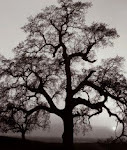Quick fixes for messy stains
Tar residue on car- using a soft cloth, rub area with a little WD-40. The tar should come off. Then clean area with a clean, wet cloth.
Chocolate - Before laundering, soak the spot with club soda.
Ink - Before laundering, spray the spot with hair spray and let dry. You can also blot the stain with rubbing alcohol before washing.
Perspiration - Before laundering, sponge the stain with a solution made up of 1 cup of water and 1 tablespoon of either white vinegar or lemon juice.
Soda pop - Immediately soak the stain with white vinegar, and then launder.
Stains that aren't oily - Use a mixture of a teaspoon of white vinegar and a teaspoon of liquid detergent mixed into 2 cups of warm water. Apply the mixture with a brush or sponge. Launder.
Stains that are oily- Brush stain with cornmeal, baking soda, or cornstarch.
Let dry to absorb grease. Brush off and then launder.
Saturday, August 30, 2008
Thursday, August 28, 2008
 Does Rinsing Apples Remove Pesticides?
Does Rinsing Apples Remove Pesticides?It’s time for apples and we can't wait to dig into sauces and pies (and fritters). Unfortunately, apples are routinely sprayed with pesticides to control a variety of insects and diseases. To avoid pesticide residues, washing the fruit is recommended; but does washing remove all the residues?
Agri-Food Canada Researchers sampled apples directly from orchards which were sprayed with one of three common organophosphate insecticides. Apples received one of three post-harvest treatments: no treatment, rinsed with deonized water, rinsed and peeled.
It was found that rinsing apples only lowered the pesticide concentrations 13.5 to 28.7 percent. Rinsing and peeling the apples lowered the levels significantly -- 74.5 to 97.9 percent. This study suggests that to significantly reduce your exposure to pesticides on apples, it’s best to rinse and peel them before eating.
For more information on this research, go to: Journal of Agricultural and Food Chemistry.
Tuesday, August 26, 2008
Tuesday, August 19, 2008
Herb Cubes!
Tender herbs such as basil, chives, parsley, chervil, and cilantro don't dry well, but they freeze fine. Right after harvesting, wash and dry the leaves. Chop or leave whole. Mix with olive oil or water. Pour the mixture into an ice cube tray and freeze until solid. Store frozen cubes in labeled bags. Use in broths, soups and sauces. You can thaw and use just the leaves if you don't want the added water or oil.
Tender herbs such as basil, chives, parsley, chervil, and cilantro don't dry well, but they freeze fine. Right after harvesting, wash and dry the leaves. Chop or leave whole. Mix with olive oil or water. Pour the mixture into an ice cube tray and freeze until solid. Store frozen cubes in labeled bags. Use in broths, soups and sauces. You can thaw and use just the leaves if you don't want the added water or oil.
Thursday, August 14, 2008
Act Like A Squirrel
Gather food from your backyard and store it away.
(Just don't forget where you put it).
The term Locavore describes a person who eats a diet consisting of food harvested from within an area of 50, 100, or 150 miles. During Midsummer, Farmers markets are brimming with fresh veggies and fruit. Buy now and store for winter.
TOMATOES· A bushel of tomatoes weighs about 53 pounds. You should get 15 to 20 quarts of whole or stewed tomatoes or juice, and half that amount cooked down into salsa. Those 53 pounds yield about 13 pounds dried.
Drying tomatoes: Choose Paste (Roma) tomatoes or a Cherry Variety. Wash, dry & slice in half or quarters. Dry in a dehydrator, a warm oven or on your windowsill. To use: Rehydrate in a little boiling water or veggie broth. Let sit until softened. Use in sauces and soups. Use the water or broth too!
Visit 100 Mile Diet for inspiring ideas.
Gather food from your backyard and store it away.
(Just don't forget where you put it).
The term Locavore describes a person who eats a diet consisting of food harvested from within an area of 50, 100, or 150 miles. During Midsummer, Farmers markets are brimming with fresh veggies and fruit. Buy now and store for winter.
TOMATOES· A bushel of tomatoes weighs about 53 pounds. You should get 15 to 20 quarts of whole or stewed tomatoes or juice, and half that amount cooked down into salsa. Those 53 pounds yield about 13 pounds dried.
Drying tomatoes: Choose Paste (Roma) tomatoes or a Cherry Variety. Wash, dry & slice in half or quarters. Dry in a dehydrator, a warm oven or on your windowsill. To use: Rehydrate in a little boiling water or veggie broth. Let sit until softened. Use in sauces and soups. Use the water or broth too!
Visit 100 Mile Diet for inspiring ideas.
Subscribe to:
Comments (Atom)

